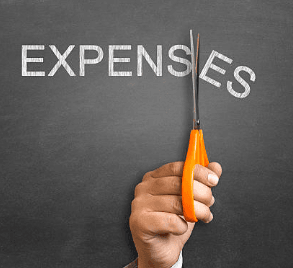© Copyright 2024 Tella (New Zealand) Limited. All Rights Reserved. Powered by Tella.
Reducing Perceived Expenses for Homeownership Success
Are you wondering what's preventing you from borrowing that extra bit you need? We'll tell you in the newsletter below.

Please Note: This newsletter was originally published on 29th September 2023. While the information presented here may still be valuable, some aspects may be outdated.
Your deposit is sorted, but the amount the bank is telling you that you can borrow falls short of what's needed for a realistic shot at homeownership. Or perhaps you're already a homeowner looking to borrow more for renovations, but you're being told that your income isn't sufficient. It's a common dilemma, and you need a solution.
Now, before you consider asking for a raise, taking up a second job, or starting a side hustle (keep in mind that you'll generally need these additional income sources for at least a year to meet the bank's criteria), let's take a different approach. How about focusing on reducing your expenses?
Your bank statements reflect your monthly spending, and it’s no secret the banks review these. However, most banks often use the national average to estimate expenses. So, what changes can you make to improve your situation?
I'll break it down for you, but be warned, we'll dive into some numbers here.
If you have a credit card, store card, or any old overdraft account still open, it could be affecting the amount you can borrow. Even if you don't max out these cards or pay them off in full each month, they're still considered to be used to their maximum limit because they're available for use.
Typically, this is seen as an cost equivalent to 4% of the limit. So, a $1,000 credit limit translates to a $40 monthly cost. You might think it's not much, but consider if you have multiple cards, like a GEM Card, Farmers Card, Mastercard, and Visa for a total limit of $10,000 or even $15,000. That's a $400 per month 'expense'. Still doesn't sound significant? Well, with $400 a month, you could pay off a $60,000 home loan over 30 years. Let that sink in - $400 a month can make a huge difference in the long run.
Basically, that $10,000 in credit card limits could be limiting how much you can borrow by a factor of six. The solution? Repay and close down those cards to increase your borrowing capacity, or reduce the limits if you're not actively using them.
But what if you need these cards for online bookings or travel, and the current limit won't suffice? Well, you can also load money onto them to purchase more expensive items and still earn rewards or points your credit card offers.
Now, let's talk about Laybuys and Afterpay. These can impact the amount you can borrow too, depending on the product. Sometimes it's the limit you have, other times it's the average of your monthly repayments. They might not seem like a big deal, but if you're paying $100 a month on these, they could be the obstacle preventing you from securing that extra $15,000 needed for home renovations. Don't let a small expense become the deciding factor for your kitchen or bathroom makeover.
Personal loans and car loans are quite common, often costing $400 a month or more. Even if you have just a few months left to pay, these payments will be factored into your borrowing amount. It's worth focusing on paying them off.
Now, let's talk about student loans; this one's a bit different and more personal. If 10% of your income goes towards repaying your student loan, that money could cover a significant portion of your home loan instead. While it may not always be feasible, for first-time homebuyers, if your student loan balance is low enough, it might be worth considering using your savings to pay it off and have a lower deposit for your home (making sure you still have the minimum deposit needed).
So, is it really your income, or are these perceived 'bank expenses' the main obstacle holding you back from getting that little bit more you need?
If you're looking to see how much you can increase your borrowing power by, don't hesitate to book a free, no-obligation call with a Tella mortgage expert today.